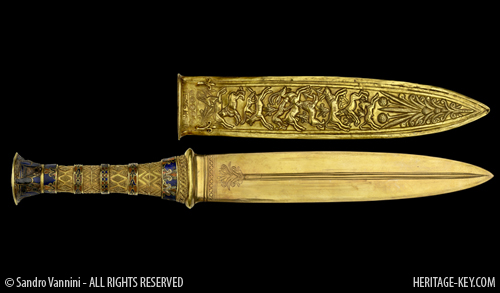Two powerful Bronze Age figures laid to rest with special reverence; two large ritual complexes in places of kingly significance; each in a bend of a river valley; two burials with remarkably well-preserved contents; and two impressive daggers. The quartz-handled dagger of King Tutankhamun is part of probably the most famous treasure hoard excavated from the dry, dusty desert of Egypt by Howard Carter and Lord Carnarvon 87 years ago; the dagger excavated by teams from Glasgow and Aberdeen Universities in Forteviot in August 2009 is still being conserved after being freshly lifted from a cist burial in the rich…

